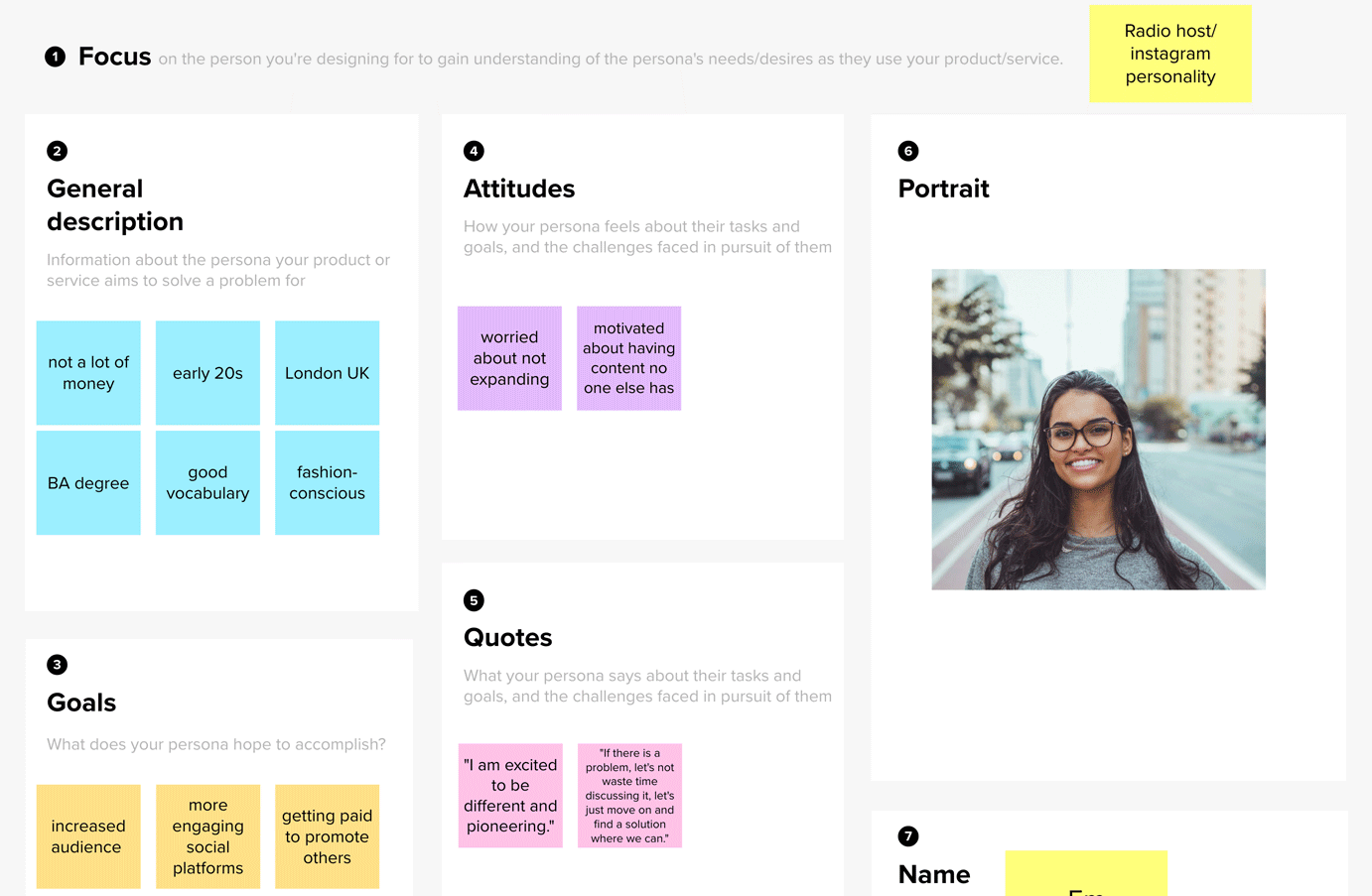Progress Report 10: Creating a Student Persona Profile
How a student persona is not the same as a customer persona
Oh hey there! Thanks for checking in on how my online course is going 🙂
Today’s update is all about student personas.
Personas are profiles that depict a target customer or user. They help business owners and product creators better understand who they are designing for and selling to.

Likewise, online course creators benefit from personas. Specifically, student personas.
It’s easier to make design decisions for your online course when you have a solid understanding of who your students are, what their pain points are, where they’re currently at in their learning journey, and where they’re trying to go.
This ensures your course is learner-centered.
It’s common for course creators to use marketing or UX design persona frameworks. The problem is the context isn’t quite the same. There are specific considerations for a potential student that is different from a typical buyer persona.
So I’ve rounded up 5 considerations I’m keeping in mind when researching my target students.
Let’s dive in ⬇️
1. Pre-existing knowledge or skills
As adult learners, we come to the "classroom" with a lot of background knowledge, skills, habits, and mindsets. Some of this will be relevant to the course and can be built on.
Or perhaps it’s the opposite. There might be concepts students need to unlearn and adjust their understanding.
📌 Design considerations:
List prerequisite knowledge/skills students need before starting the course
Provide a prep-work module, if necessary
Avoid over-explaining concepts and terminology students are already familiar with
Guide students through moments of unlearning
2. Context of application
Customer personas will typically look at the context of how people are using a product.
Specific to an online course, I want to know where students are applying their new knowledge and skills. Will it be at their job? For their business? A personal hobby?
With this context, I can frame my course and the content in a way that’s most relevant and actionable for students.
📌 Design considerations:
Design course activities and tasks to be immediately transferrable to students’ work or life
Choose projects, teaching examples, and case studies that coincide with the students’ industry or interests
3. Motivation to learn
There are two parts to this;
Why someone has decided to learn a new skill
Why they decided to take an online course to achieve this (especially with all the free knowledge on the internet!)
Another way to look at this is in terms of consequences. What happens if the student never learns the skill or doesn’t complete the course?
Based on the research for my particular course and student personas, one reason a content creator would want to learn course creation skills is that they don’t have the budget to outsource and hire an instructional designer. And so, by learning how to do it themselves, they can save money as well as maintain creative control.
But they’re not looking for the level of expertise and instructional design skills I’ve gained throughout my career. They just want a practical framework that gets them to their desired outcome.
📌 Design considerations:
Align learning objectives with student motivations
Frame and promote the course using student motivations (and consequences of not learning)
4. Existing feedback systems
I can’t stress enough how crucial feedback is to learning. And this is often neglected in online courses, especially in self-paced formats.
But think about it: How would you know if you’re doing well or progressing at something without receiving personalized feedback?
When I worked on corporate training, a game-changer was finding opportunities to align training with existing processes and moments when employees were already receiving feedback (e.g. performance reviews, internal team demos, QA processes).
Sometimes it’s not a perfect fit. But it’s worthwhile to try designing for the student’s existing systems and workflows.
📌 Design considerations:
Include personalized feedback as part of the course or a premium option
Provide resources that help students maximize feedback both in and outside of the course (e.g. self-assessment and progress tracking templates, questionnaire for managers)
Open channels for peer feedback (e.g. course community)
5. Tools-savviness
Often, when demonstrating a skill you’re also using tools, equipment, or resources related to the activity.
Similar to building on pre-existing knowledge and skills, students might be familiar with these tools in a different context. For example, a lot of people have used Zoom. But they’ve used it as an attendee, not as a facilitator.
On a related note: Finding out how “tech-savvy” students consider themselves can be insightful. This is a common hurdle that can detract from the core learning objectives of the course. Even if the course topic isn’t technical at all, an online course by default requires students to use technology.
📌 Design considerations:
In the enrolment form, ask students which tools they’re familiar with
Allocate support and time for relieving technology-related hurdles
Provide a required tools list before the course, especially if the tools aren’t free
Seek opportunities to provide discount codes for tools (which is also a great course incentive idea!)
Thanks for reading!
Curious to hear if you’re also researching and trying to understand your student personas better. Drop a comment or message me at brainoflaraine@gmail.com.
Have a great end of week!
Laraine



